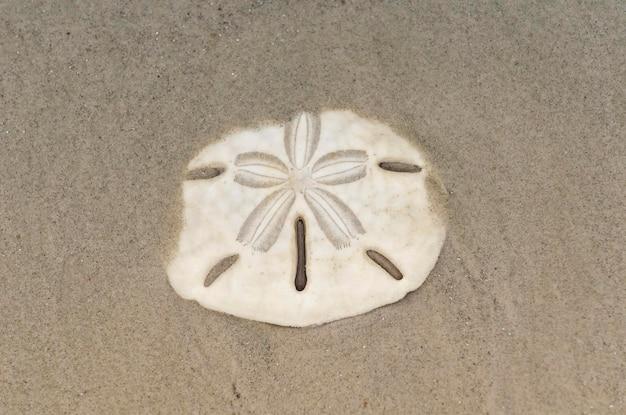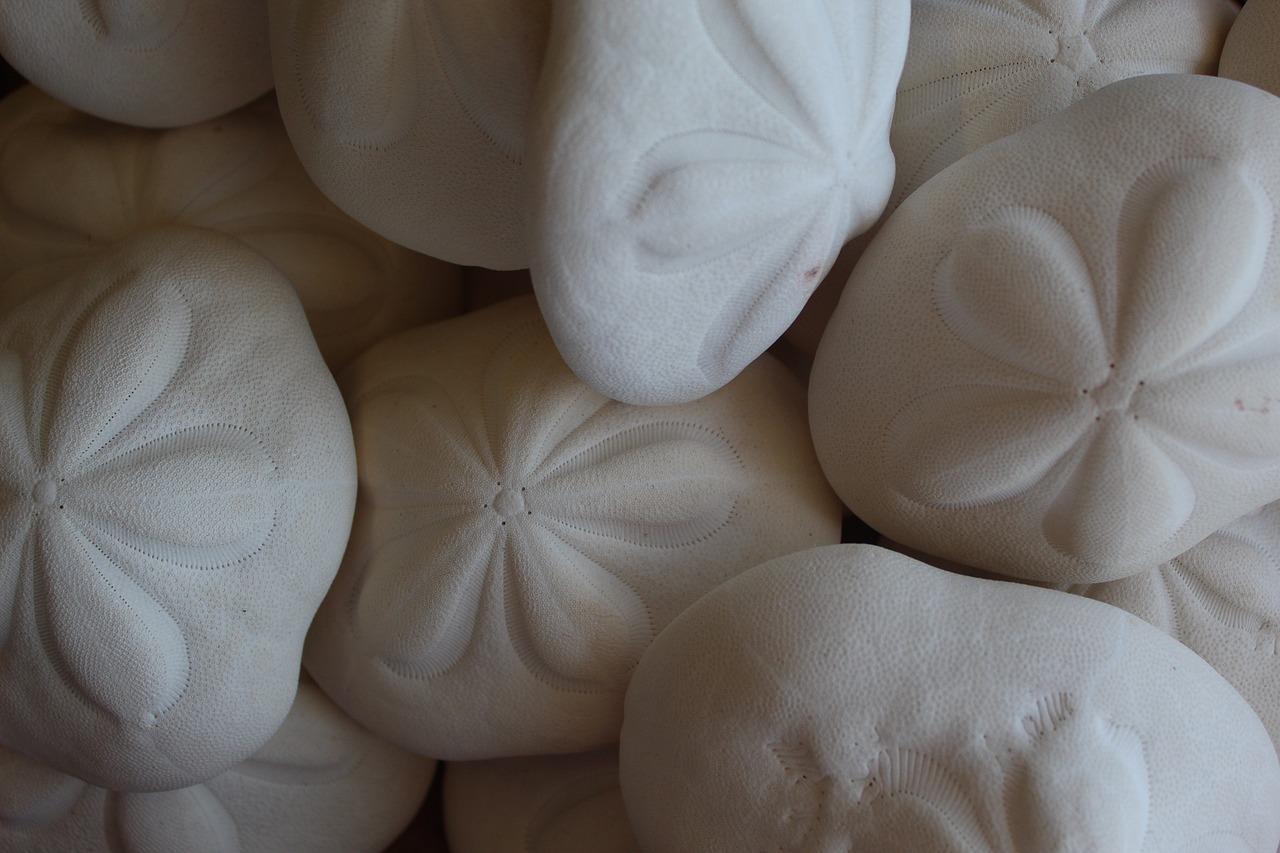Are you curious about those fascinating, disc-shaped shells you often spot while strolling along the beach? They might just be sand dollars, also known as sea biscuits! These captivating marine creatures have piqued the interest of beachgoers and nature enthusiasts for generations. In this blog post, we will take a deep dive into the world of sea biscuit shells, unraveling their intriguing secrets and dispelling common misconceptions.
From uncovering the origin of their name to understanding their unique features, we’ll address questions like why sand dollars have a star and if they have brains. We’ll also explore the differences between sand dollars and sea biscuits and delve into the captivating lives of the tiny inhabitants that call these shells their home. So grab your sunscreen and join us on a journey to uncover the mysteries of sea biscuit shells that lie beneath the shimmering waves.
What Is A Sea Biscuit Shell
Sea biscuit shells may sound like something you’d find in a bakery run by fish, but hold on a minute, because that’s not what we’re talking about here. Instead, we’re diving into the fascinating world of marine biology to uncover the secrets of these intriguing creatures and their shells. So, fasten your seatbelts (or should I say, snorkel masks) and get ready to explore the wonders of sea biscuit shells!
The Scoop on Sea Biscuits
Sea biscuits, not to be confused with the ones you dip in your tea, are flat, disk-shaped creatures that belong to the class Echinoidea. They are close relatives of sea stars and sea urchins, making them part of the superstar group known as the echinoderms.
Shaping Up with Sea Biscuit Shells
One thing that sets sea biscuits apart from their echinoderm cousins is their distinctive shell. These shells, often reminiscent of sand dollars, have a round shape and a slightly domed appearance. They come in various sizes, with diameters ranging from as small as a few centimeters to as large as your hand (well, maybe a slightly bigger hand). And let’s not forget their charming color palette of muted pinks, purples, and even blues.
The Lowdown on the Shell Structure
Underneath their mesmerizing exteriors, sea biscuit shells have a fascinating anatomical structure. The outer layer, known as the test, is made up of tiny skeletal plates called ossicles. These ossicles are composed primarily of calcium carbonate, which gives the shells their rigidity and durability. It’s like having a fortress wrapped around your body, but much, much prettier!
From Past to Present
Sea biscuits have been cruising the ocean floors for quite some time now. Fossil records date back millions of years and show that these creatures have been perfecting their shell game for ages. Their ability to adapt and survive in various marine environments is truly remarkable. You could say they’re the Indiana Jones of the underwater world!
Why Have a Shell Anyway
Now, you might be wondering why sea biscuits bother lugging around these heavy shells. Well, my curious friend, the shell serves a vital purpose. It provides protection against predators, like hungry fish or curious crabs, giving these creatures a cozy home they can carry with them wherever they go. Plus, it helps with buoyancy control, allowing them to catch a ride on ocean currents and effortlessly glide through the water. Talk about a stylish and functional accessory!
Let’s Talk Maintenance
Like any responsible homeowner, sea biscuits have to take care of their shells. They do this by constantly growing new plates on the edges of their shells, gradually expanding its size. It’s like remodeling your house while still living in it. This continuous growth ensures that their homes remain a perfect fit as they grow older and wiser.
A Shell of Mystery
While we now have a pretty good handle on what sea biscuit shells are, there’s still much we don’t know. Scientists continue to explore the intricacies of these captivating creatures, studying their behavior, reproduction, and ecological role. It’s like they’re writing a never-ending detective novel, trying to uncover the mysteries of the sea.
Sea biscuit shells are not just pretty ornaments you can collect on your beachcombing adventures—they are the armor, the home, and the symbol of a remarkable marine creature. Armed with their stunning shells, sea biscuits gracefully navigate the underwater realm, reminding us that beauty, strength, and a touch of mystery can all exist in the same package. So, the next time you stumble upon a sea biscuit shell, take a moment to marvel at the wonders of nature and the incredible stories it holds beneath its captivating surface.
What Is A Sea Biscuit Shell: Frequently Asked Questions (FAQ)
Why is Seabiscuit famous
Seabiscuit, the legendary racehorse, became famous for defying odds and capturing the hearts of the American public during the Great Depression. With his underdog status, Seabiscuit’s victories symbolized hope and perseverance in challenging times.
Why is it called a sea biscuit
The term “sea biscuit” refers to a type of marine animal known as a sand dollar. It gained its name due to its round shape, resembling a biscuit or cracker. The “sea” part comes from its habitat in the ocean.
Do sand dollars have brains
No, sand dollars don’t have brains. These fascinating creatures belong to the echinoderm family, which includes sea stars and sea urchins. They rely on a decentralized nervous system to coordinate their movements and survival instincts.
Why do sand dollars have a star
Contrary to popular belief, the pattern on a sand dollar does not represent a starfish. Instead, it serves a purpose in the animal’s respiration and movement. The star-like pattern consists of tiny pores that facilitate water flow and aid in the sand dollar’s filter-feeding process.
How much is a sand dollar worth
In terms of currency, sand dollars don’t hold any monetary value. However, as souvenirs or decorative items, they can be cherished mementos of beach trips or kept as interesting additions to seashell collections.
What do sand dollar eggs look like
Sand dollar eggs, also called “sand dollar doves,” appear as small white discs with intricate patterns. These delicate markings, resembling a flower or star, are unique to each species. The eggs gradually develop into larvae, metamorphosing into adult sand dollars over time.
How do sand dollars have babies
Sand dollars reproduce by releasing eggs and sperm into the water during spawning events. Once fertilized, the eggs develop into free-floating larval forms called “pluteus.” After weeks or months of drifting, they settle onto the seafloor and transform into juvenile sand dollars.
Is it illegal to take sand dollars
The regulations regarding collecting sea treasures like sand dollars differ depending on your location. In some areas, it’s permissible to collect dead sand dollars found on beaches. However, it’s crucial to research and adhere to local laws and guidelines to ensure the preservation of marine ecosystems.
What killed Seabiscuit
Seabiscuit, the racehorse, passed away due to a heart attack on May 17, 1947. Despite his untimely death, Seabiscuit’s impact on racing history and American culture remains strong.
Are sand dollars poisonous
No, sand dollars are not poisonous. While they possess tiny spines that can be sharp, they do not have any toxic or harmful properties. However, it’s advisable to handle them with care to avoid injury.
What lives in a sand dollar shell
A sand dollar shell can sometimes house small crustaceans like amphipods or tiny worms. These organisms seek shelter and protection within the empty shells, utilizing them as temporary homes.
What is the difference between a sand dollar and a sea biscuit
The terms “sand dollar” and “sea biscuit” are often used interchangeably. However, “sea biscuit” typically refers to larger species of sand dollars found in the ocean, often with a thicker and more robust shell.
What makes a sea biscuit
A sea biscuit, or sand dollar, is an echinoderm marine animal with a hard exoskeleton made of calcium carbonate. Its flat, round shape and distinct star-like pattern are characteristic features.
What does it mean to find a whole sand dollar
Finding a whole sand dollar is considered lucky and a rare occurrence. It signifies being in the right place at the right time, connecting with nature, and experiencing a moment of serendipity on the beach.
What does a sand dollar eat
Sand dollars are filter feeders and primarily consume tiny particles and microorganisms present in the surrounding seawater. They extend their tubular feet to capture and transport food to their mouth located on the underside of their body.
What is inside a sea biscuit
Inside a sea biscuit, you’ll find a complex internal structure that includes a mouth, digestive system, water vascular system, and reproductive organs. These intricate systems enable the sand dollar’s survival and reproduction.
What is a Seabiscuit food
Seabiscuit, the racehorse, consumed a diet of high-quality grains, hay, and various supplements to meet its energy and nutritional requirements. The specific food regimen was carefully curated to optimize Seabiscuit’s athletic performance.
What animal lives in a sand dollar
A variety of small marine organisms, such as amphipods, copepods, and benthic worms, often inhabit the crevices and openings of a sand dollar shell. These creatures find refuge in the shell’s protective structure before eventually moving on to other habitats.
Enjoy exploring the mysteries of the enchanting sea biscuit shell—a captivating marine wonder that has fascinated beachgoers and nature enthusiasts alike. Keep your eyes peeled for these treasures during your next beach adventure!

